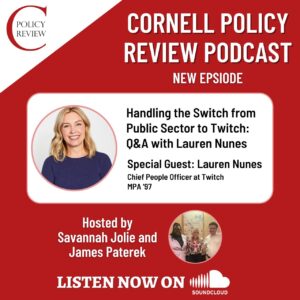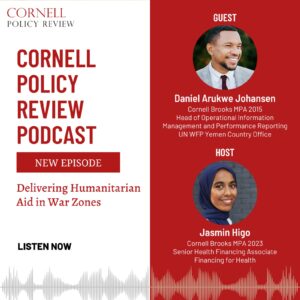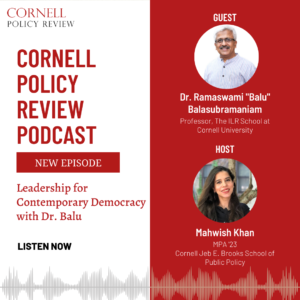
By Anna Guarnieri
Edited by Annika McGraw
Background and Problem
Each day, individuals make financial decisions on spending, saving, investing, and borrowing. Without a basic understanding of the short and long-term implications of those financial decisions, individuals may miss opportunities to become more financially resilient, may be increasingly vulnerable to financial fraud, or may make poor decisions that can negatively impact their future financial health and goals. According to the Consumer Financial Protection Board (CFPB), the need to raise levels of financial literacy in the marketplace has only grown as the complexity and variety of financial products increases.1
Until recently, personal financial training was absent from high school curriculums. In 2000, only seven states required that high schools offer a personal finance course. In 2022, this number has increased to 27.2 Even still, much financial education has been left to parents, who themselves are untrained. Since 2017, the Teachers Insurance and Annuity Association of America (TIAA) financial advisory and the Global Financial Literacy Excellence Center (GFLEC), have been conducting a study that assesses the financial literacy of five generations of adults in the U.S. Their 2022 report shows that financial literacy is low, particularly for individuals in Generations Y and Z—those aged 18 to 42. According to the study, adults aged 28 to 42 answered only 46% of basic financial questions correctly, while those aged 18 to 27 answered 42% correctly.3 This high number of financially illiterate participants provides further evidence that breaking the cycle of financial illiteracy cannot be left up to parents.
There is a growing recognition of the necessity of financial education. According to a 2021 U.S. survey conducted by the National Financial Educators Council, over 83.3% of people believe financial literacy should be taught in high schools.4 23 states in the U.S. now require that high school students complete a personal finance course before graduation.5 While progress toward structured personal finance education is promising, there are many states where this education is still not required for high school graduation.
Personal finance education is particularly important for high school students, as many will choose to fund their higher education with loans. Excessive debt can impede an individual’s financial well-being for decades, limiting their ability to buy a home and save for retirement. According to the Bipartisan Policy Center, a Washington, D.C. think tank, student loan debt was $1.6 trillion in 2020—a 144% increase from 2007. Additionally, nearly 20% of borrowers were in default prior to the suspension of interest and loan payments in response to the COVID-19 pandemic.6
There are multiple organizations and research centers that advocate universal access to personal finance education for high school students. The content is similar across different organizations and includes topics such as saving, investing, maintaining strong credit scores, and insurance. The method of delivery, however, varies across school districts.
One method of personal finance training includes interactive financial simulation programs. Students are guided through a series of decisions and activities that simulate everyday financial and life decisions. The interactive games range from a single financial topic to multi-day simulations where the student is the main character and sole decision-maker. The simulation provides regular feedback on the student’s decisions and stresses the interconnectedness of financial decisions and personal well-being. Students are scored on overall wealth, credit score, and health. The student can decide to pay for higher education, leading to higher paying jobs, or even take on multiple jobs. However, the student’s simulation score is lowered if sufficient sleep, recreation, and nutrition is not budgeted. The student must pay bills in the programs’ simulated monthly intervals in order to maintain a strong enough credit score to qualify for a car or student loan. If the student’s credit score is low, they can choose to improve it through a series of activities such as on-time bill payment and judicious credit card usage. The simulations are flexible and can be used either throughout a defined academic period or as a single project to promote healthy financial habits.
Expanding financial literacy is critical for long-term financial wellbeing. To meaningfully improve financial literacy in the U.S., each state should revise high school graduation requirements to include at least one semester of personal financial education. Financial education curriculums should be geared towards the creation of healthy financial behaviors and habits that will last a lifetime. Experiential teaching methods expose students to financial decision-making, reinforcing lesson plans and readings. Interactive virtual simulations are an effective tool for teachers to reach teens through a medium that is familiar, accessible, and engaging.
Endnotes
1. Bureau, Consumer Financial Protection. (2021). “Financial literacy annual report.” cfpb_financial-literacy-fy-2021_annual-report_2022-03.pdf (consumerfinance.gov). pdf (March, 2022) (2022).
2. “Council for Economic Education’s Biennial Survey of the States Finds Encouraging Progress in Personal Finance Education but Troubling Stagnation in Teaching Essential Economics in America’s High Schools.” Business Wire, Mar 17, 2022. https://www-proquest-com.proxy.library.cornell.edu/wire-feeds/council-economic-education-s-biennial-survey/docview/2640009264/se-2.
3. Yakoboski, Paul, Annamaria Lusardi, and Andrea Hasler. (2022). “How Financial Literacy Varies among US Adults: The 2022 TIAA Institute-GFLEC Personal Finance Index.” TIAA Institute Research Paper Series 2022-01 (2022).
4. “National Financial Educators Council 2020 Survey”. (n.d.). Accessed Jan, 8, 2022, NFEC Survey: “Should High Schools Require Financial Literacy?” (financialeducatorscouncil.org)
5. “Council for Economic Education’s Biennial Survey of the States Finds Encouraging Progress in Personal Finance Education but Troubling Stagnation in Teaching Essential Economics in America’s High Schools.” (2022). Business Wire, Mar 17, 2022. https://www-proquest-com.proxy.library.cornell.edu/wire-feeds/council-economic-education-s-biennial-survey/docview/2640009264/se-2.
6. GRANT, THROUGH A. FLEXIBLE MATCHING. “A Moderate Alternative to Free College.” (2021)





